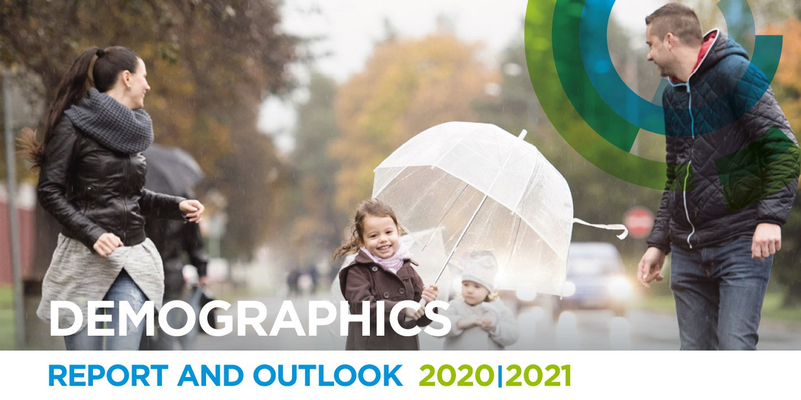Summary
According to Statistics Canada, the population of the Québec City census metropolitan area (CMA) increased by 7,178 people (0.9%) to 832,328 between 2019 and 2020, in line with the provincial average growth rate. Québec City had the lowest population growth of any major Canadian CMA between 2015 and 2020, with a rate of 4.2%. It was below the provincial (4.9%) and Canadian (6.4%) rates for the same period.
Québec City’s growth in 2020 was driven primarily by migration and to a lesser degree by natural growth. Despite declines in the previous year, both natural growth and migration were positive in 2020. These results have their roots in the pandemic, which caused more deaths and reduced migratory activity, and structural factors such as population aging. These findings reflect demographic trends in theregion, including changes to the working-age population’s demographic weight, which has been declining steadily over the years. In 2020, 64% of the population of Québec City was in the 15–64 age group, the lowest percentage for a major Canadian CMA.
In 2019–2020, Québec City once again had the highest net interregional migration, with a net total of 1,573 migrants. It also had a positive net migration of 58 people from the rest of the country, a first in terms of available data. The Québec City CMA remains attractive internationally, but it must increase its efforts to welcome more international immigrants and non-permanent residents.
Outlook
The Institut de la statistique du Québec has produced 25-year demographic forecasts for Québec’s CMAs that cover 2016 to 2041. The Québec City CMA’s population is expected to grow by 12% to 897,400 between 2016 and 2041 (+93,000 people). Over the same period, the Montréal CMA is expected to grow by 19% to 4,938,095, the highest projected increase among Québec’s CMAs. The province’s overall population growth is forecast to be 14%, for a total population of 9,350,214 in 2041. With this projected population change, Québec City’s demographic weight in the province is expected to dip from 9.8% to 9.6% between 2016 and 2041. Montréal leads the pack in these projections, going from 50.3% to almost 53% of Québec’s population.
The Québec City CMA should see slight stagnation in growth in the 15–64 age group between 2016 and 2041 (-0.1%), with the total number of people decreasing from 532,842 in 2016 to 532,082 in 2041. In contrast, the Montréal CMA and the province as a whole are expected to see respective increases of 9% and 2% in the working-age population segment between 2016 and 2041. The rest of the province will see an 8% decrease in this category over the same period.




